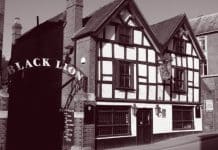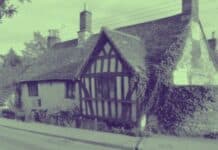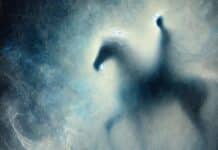The Talbot Hotel in Oundle has an usual link to a royal execution which has seen the quaint Northamptonshire pub haunted ever since. DAVID SAUNDERSON tells us why.
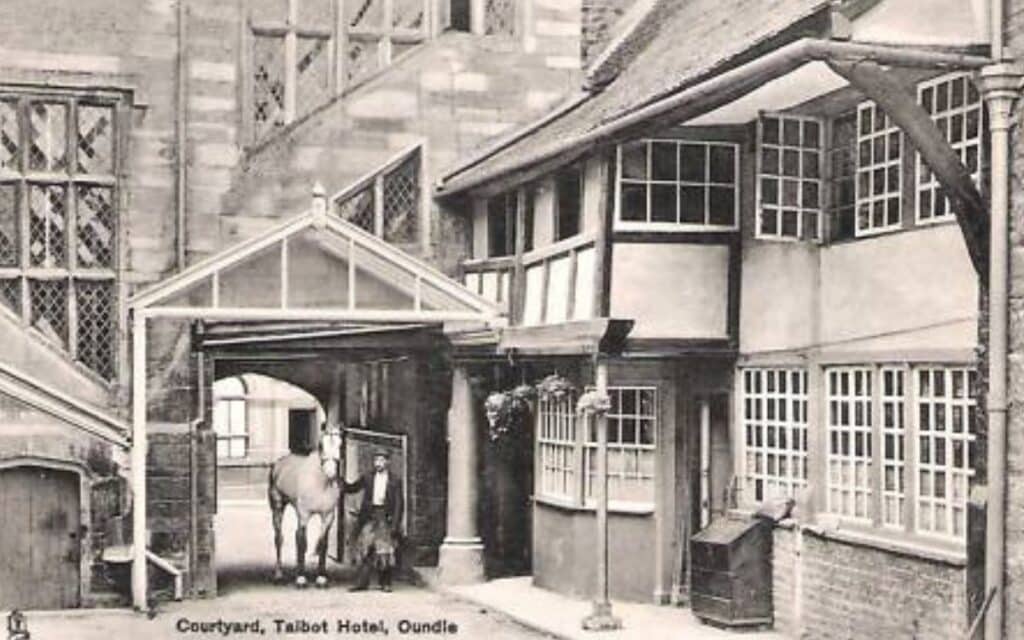
The Grade I-listed Talbot Hotel in Oundle, Northamptonshire, that you see today was rebuilt in 1626. But there has been an inn on the site since the 1500s. It’s long been thought to be haunted by the ghost of Mary, Queen of Scots, who was executed at the nearby Fotheringhay Castle in 1587.
Behind the frontage of The Talbot Hotel in Oundle are significant remaining elements of a timber-framed building, which is known to have been part of an inn during the 1500s under the name of The Tabret or Tabard.
In the late 1700s ,The Talbot became an important coaching inn, providing rest and refreshments on a route to London.
Talbot Hotel linked to Fotheringhay Castle
About three miles from Oundle is Fotheringhay Castle, a Middle Age Norman Motte-and-bailey castle, built around 1100 by Simon de Senlis, Earl of Northampton. Through marriage, the castle passed to Scottish princes until King John of England seized it in the early 13th century. It was the birthplace of King Richard III in 1452.
Fotheringhay Castle has an interesting past. For example, it was where King Richard III was born. However, the most important thing to know about the Talbot Hotel is that it was where Mary, Queen of Scots, was imprisoned and executed in 1567 after being accused of conspiring to assassinate Queen Elizabeth I.
Mary, Queen of Scots, who had served most of her 18-year detention in Sheffield Castle and Sheffield Manor, spent her last days at Fotheringhay Castle, which was a prison at the time. Her trial lasted two days before she was tried and found guilty of treason.
After more than two months of waiting for Elizabeth I of England to sign her death warrant, Mary was told the day before her execution that her punishment would be carried out. She spent her last night praying in the castle’s chapel. She was beheaded on a scaffold in the Fotheringhay Castle’s Great Hall on 8 February 1587.
Mary’s body was exhibited at Fotheringhay until July of that year, when it was transported to Peterborough Cathedral for a night burial. When Mary’s son James ascended to the throne as James I of England, he had his mother’s ashes transported to Westminster Abbey to be interred.
Despite its size and significance, Fotheringhay Castle was abandoned and eventually sold after Mary’s execution.
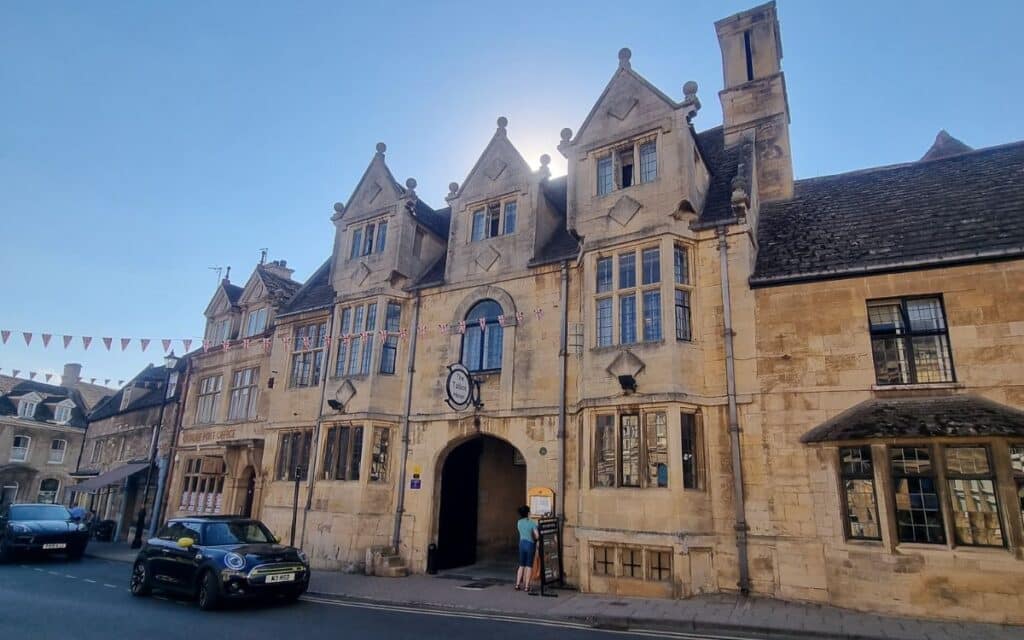
It has been suggested that James I destroyed the castle in retaliation for his mother’s execution, but the most likely explanation is that it was already falling into disrepair.
William Whitwell, a developer, purchased items from the Fotheringhay Castle demolition site and used them at The Talbot.
The hotel’s staircase, the large horn window, and the bedroom panelling are all supposed to have originated from the long-gone Fotheringhay Castle.
Whether the staircase was the same as the one Mary, Queen of Scots used at Fotheringhay Castle is up for contention. The story has been upheld, fostered, and strengthened by claims of the queen’s spectral presence on the stairway, which experts believe was most likely built in the 1600s.
It’s also claimed the Scottish queen’s executioner spent the night before his terrible duty at The Talbot and dined on pigeon pie.
All of this has given rise to spooky stories about the hotel being haunted.
Ghosts and Hauntings at The Talbot Hotel
Two of the top bedrooms and the higher staircases are rumoured to be haunted by the sad queen.
In one of the rooms, a ghostly woman wearing a long black dress has frequently been spotted standing at the foot of a bed. She occasionally may be seen wistfully staring out the mullioned windows on the staircase.
On occasion, a woman’s hours-long crying has disturbed visitors who are sleeping on that floor. Often, the manifestation will take place following construction modifications.
Aside from Mary, Queen of Scots’ apparition, another reason the Talbot is well-known is for a chamber called The Drumming Well Room.
This chamber was given its name after a well in the yard that was said to create a drumming sound whenever anything bad was about to happen or when someone was about to die.
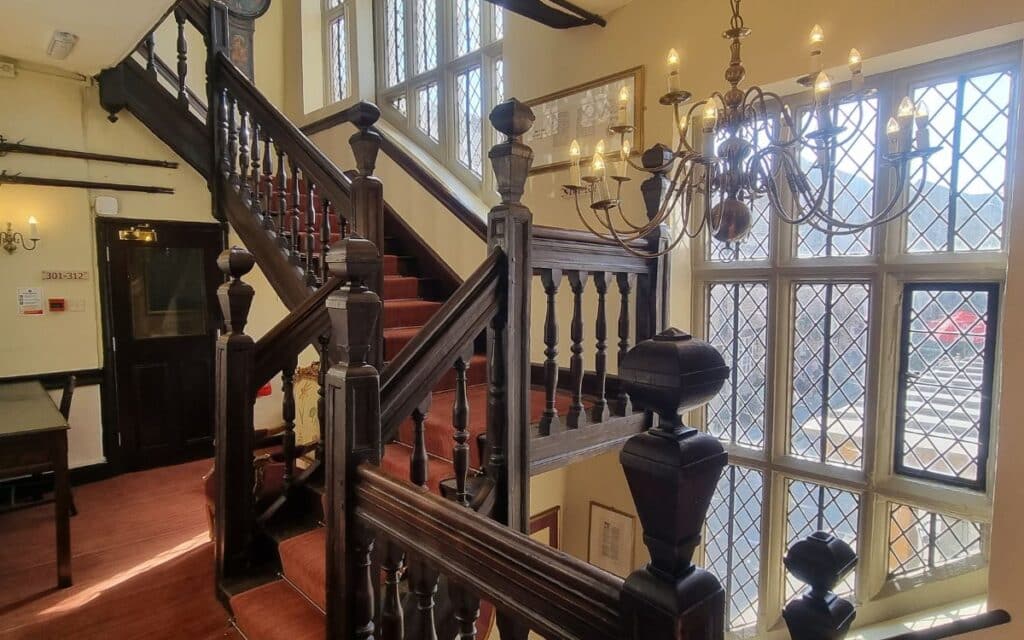
The Talbot Hotel Today
Today, The Talbot Hotel is a charming Elizabethan hotel that retains many of its historic features. such as oak beams and open fires.
The restaurant and bar offers traditional British cuisine, fine wines and real ales.
Oundle, the historic market town itself, is full of wonderful Georgian architecture and a 14th-century church. Close by is Lyveden New Bield, the remains of a cross-shaped 16th-century lodge. Peterborough is just 9.9 miles away.
Oundle is a little community with only a handful of shops, but not far away you can see the ruins of Fotheringhay Castle and Prebendal House, one of the oldest buildings in the county, as well the nearby Lyveden garden lodge. Several gardens and country manors can be found in the area, as can a preserved railway.
The Talbot Hotel is at New Street, Oundle, Northamptonshire PE8 4EA.
Have you seen a ghost at The Talbot Hotel in Oundle? Tell us about it in the comments section below!





